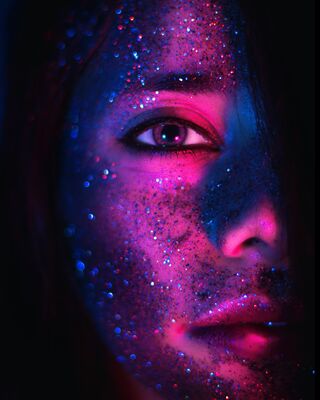Artificial Intelligence
AI Neural Network Mimics the Human Brain on Psychedelics
Swiss and British researchers create AI that hallucinates like a brain on DMT.
Posted January 13, 2021 Reviewed by Gary Drevitch

Artificial intelligence (AI) and the use of psychedelic drugs for legal medical purposes are currently trending. A study published last month in The Neuroscience of Consciousness shows how deep convolutional neural networks can be used to create changes in natural images akin to psychedelic hallucinations. Specifically, researchers found a way for machine learning to “hallucinate” like the biological brain on DMT psychedelics.
The research duo of Michael M. Schartner at the Université de Genève in Geneva, Switzerland, and Christopher Timmermann at the Imperial College in London created a model using two generative deep convolutional neural networks to show psychedelic hallucinations associated with N,N-Dimethyltryptamine (DMT), a hallucinogen.
The short-term effects that people who ingest hallucinogenic drugs experience is a distortion of the ability to be rational, communicate, and recognize reality. They may see, feel, touch, smell, and hear things that are not real and do not exist. But why try to construct and study a machine learning model that hallucinates like the biological brain on psychedelics? “Such models not only have the potential utility of being a most accurate medium to illustrate visual effects of psychedelics but also to conceptualize potential biological mechanisms of the balanced integration of exogenous and endogenous information into conscious experience,” wrote the researchers.
There is an emerging trend in the industries of neurotech, biotech, health care, pharmaceutical, and life sciences in the exploration of the use of psychedelic drugs as treatment for a wide range of mental health disorders. Increasingly, angel investors and cutting-edge venture capital companies are funding pioneering startups and research centers that investigate using psychedelics as possible treatments for conditions such as addiction, post-traumatic stress disorder (PTSD), anxiety, major depressive disorder (MDD), treatment-resistant depression, narcolepsy, anorexia nervosa, Alzheimer’s disease, post-treatment Lyme’s disease syndrome, and more.
Investors who have funded psychedelic research within the past few years include Tim Ferris, Blake Mycoskie, Matt Mullenweg, Jim Mellon, and others. Prestigious institutions such as Johns Hopkins University in Maryland and the Icahn School of Medicine at Mount Sinai in New York have dedicated centers for psychedelic research. Pharmaceutical giant Johnson & Johnson gained U.S. Food and Drug Administration (FDA) approval in 2019 for its fast-acting antidepressant chemical compound that mirrors ketamine.
“The regulatory role of the serotonergic system on conscious perception can be investigated perturbatorily with psychedelic drugs such as N,N-Dimethyltryptamine,” wrote the researchers. “There is increasing evidence that the serotonergic system gates prior (endogenous) and sensory (exogenous) information in the construction of a conscious experience."
“The proposed model interpretations are speculative examples intended to illustrate the potential of generative deep neural networks to create visual output in line with psychedelic phenomenology."
Although AI and psychedelics hail from completely separate domains, they are both emerging from periods of dormancy and have the potential to serve as useful tools to help what ails humanity’s mental health in the not-so-distant future.
Copyright © 2021 Cami Rosso All rights reserved.


